Jim Thayer, author of Hiking
from Portland to the Coast, recounts the magic of combining scientific knowledge and artistic wonder while mushroom hunting in Oregon’s woods. Armed with his
extensive knowledge of and familiarity with the forest and its plants, Jim
searches the forest floor for his targets – chanterelle mushrooms. But the
mushrooms don’t surrender easily. They camouflage themselves against the beauty
of the fall landscape, playing hide and seek. Jim provides some insight into,
and advice for, the exhilarating quest for chanterelle mushrooms.
______________________
October is one of the busiest times in our woods and meadows. The air begins to have an edge to it and all the animals are scurrying around with newfound resolve. Outside, the first rains have fallen, and the warm winds of late September have been replaced by cooler weather sliding down from Alaska. I watch as the verdant leaves begin to fall, littering the forest floor with a light wash of yellow petals. From somewhere deep inside my bones, I feel a thrill as the forest throws off its late summer lethargy and comes alive with activity.
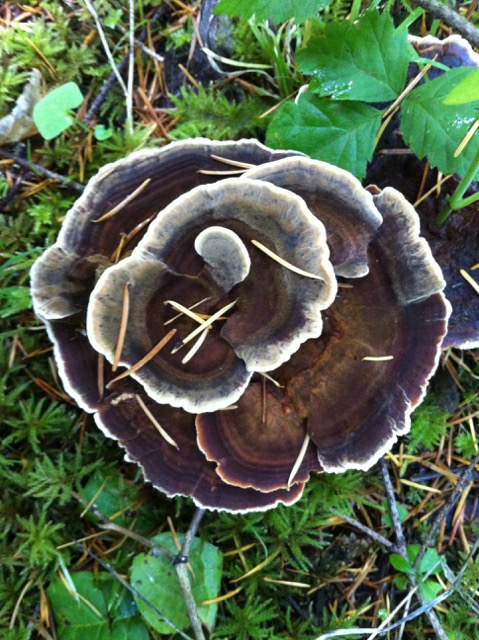 By early October, it’s clear that nature is on the move. The first to arrive are the exotic Sandhill cranes, whose courtship dances have made them a favorite amongst bird watchers. Soon thereafter, you’ll hear that unmistakable double honk as the Canada geese descend upon our lawns and fields as if it were the Normandy Invasion. Our rivers too, are busy as the first fall runs of salmon thrust into the tributaries, pushing relentlessly to where they will lay their eggs in the fine gravel deposits hidden along the little streams.
By early October, it’s clear that nature is on the move. The first to arrive are the exotic Sandhill cranes, whose courtship dances have made them a favorite amongst bird watchers. Soon thereafter, you’ll hear that unmistakable double honk as the Canada geese descend upon our lawns and fields as if it were the Normandy Invasion. Our rivers too, are busy as the first fall runs of salmon thrust into the tributaries, pushing relentlessly to where they will lay their eggs in the fine gravel deposits hidden along the little streams.
Even the spiders are busy. All summer long, the newly hatched spiders have been growing and now they’re ready to strike out on their own. Looking out across a meadow you may see spiders climbing to the top of the tallest plants, where they shoot out a lengthy strand of silk. As the gossamer thread ascends on the warm breezes, it soon lifts the spider off its perch and together they are wafted high into the sky. These “ballooning” spiders can travel miles and disperse across huge swathes of countryside.
Hunting chanterelles:
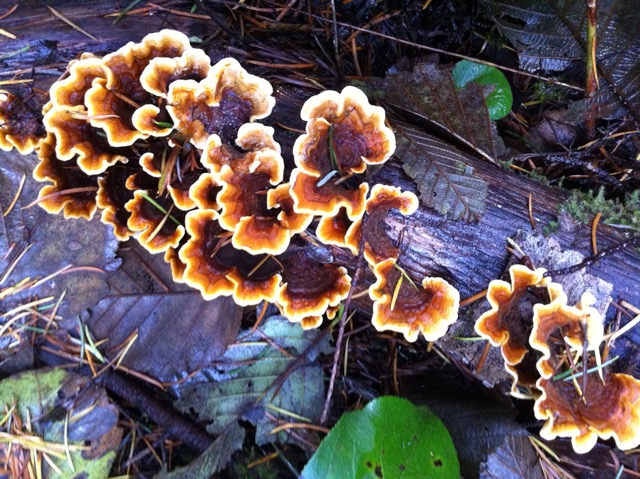 It is estimated that the worldwide market for chanterelles is worth about $1.62 billion. Prices range from $8 to more than $50 per pound. However, these market statistics completely miss the point. It’s not the mushrooms that are valuable. It’s the unique experience of hunting these clever little munchkins that is priceless. Mind you, hunting chanterelles is not an ordinary foraging exercise. It takes cunning, patience, and an eye for spotting that unique shade of yellow that signifies the emergence of a newly sprouted chanterelle.
It is estimated that the worldwide market for chanterelles is worth about $1.62 billion. Prices range from $8 to more than $50 per pound. However, these market statistics completely miss the point. It’s not the mushrooms that are valuable. It’s the unique experience of hunting these clever little munchkins that is priceless. Mind you, hunting chanterelles is not an ordinary foraging exercise. It takes cunning, patience, and an eye for spotting that unique shade of yellow that signifies the emergence of a newly sprouted chanterelle.
For those among you that share my passion or aspire to engage in this rustic treasure hunt, I have some advice about when and where to find the elusive chanterelles.
When to find chanterelles:
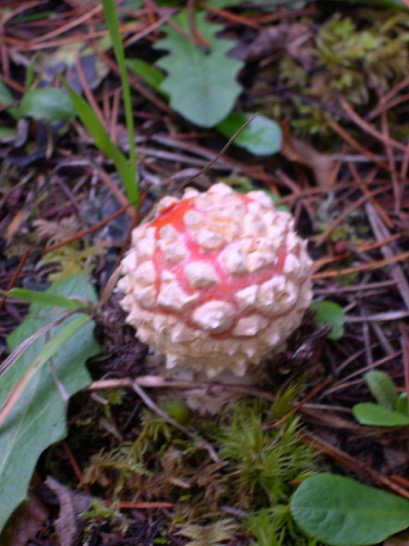 My old German mushroom guides claim that chanterelles (“pfifferlinge”) can be harvested as early as June and as late as November. Here in the Pacific Northwest the season is shorter and begins in late September. Of course, it matters where you’re situated. The higher the elevation, the lower the temperature. As the temperatures drop, the mushrooms tend to wilt, so lower elevations can sustain mushroom growth later into the season.
My old German mushroom guides claim that chanterelles (“pfifferlinge”) can be harvested as early as June and as late as November. Here in the Pacific Northwest the season is shorter and begins in late September. Of course, it matters where you’re situated. The higher the elevation, the lower the temperature. As the temperatures drop, the mushrooms tend to wilt, so lower elevations can sustain mushroom growth later into the season.
At the north end of the Willamette Valley, the first rains usually arrive at the beginning of October. In my experience it takes another three to four weeks (from the beginning of October) for the forest fertility to advance to the point that it can produce more substantial mushrooms, such as the chanterelles or the prized matsutake.
Chanterelle hunting however, requires a more proactive approach than simply counting the days until early November. Most years, I am out scouting likely locations at least three times before the chanterelles finally make their debut.
Around mid-October, I begin my reconnoitering. By now the woods are wet and muddy, and little sprigs of fungal matter are beginning to pierce the duff. I know it’s too early, but the anticipation is gnawing at me and I can’t wait… Even though, I know these early forays will only uncover a handful of DBM’s.
DBM’s – or damned brown mushrooms – represent most of what I find at the beginning of the season. These small mushrooms are neither tasty nor big enough to garnish a meal, and some are poisonous. So I rarely take the time to even identify them, which is why they are often lumped together and referred to by their acronym.
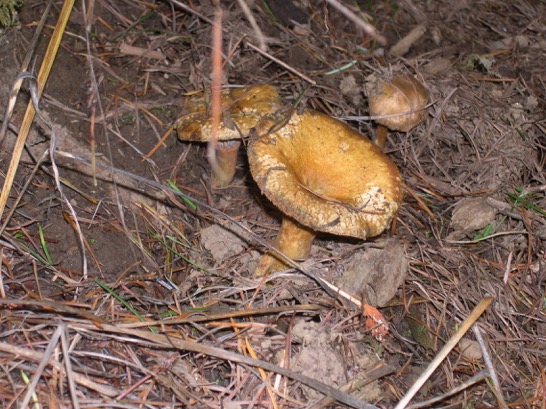 Some of the more common fungi that lead off the mushroom parade include: puff balls, inky caps, the western red-capped Cortinarius, the clustered woodlover, the poisonous haymaker’s mushroom, and a parade of miniatures including the Marasmius and Paneolus families, and, my favorite, the tiny orange Omphalina fibula.
Some of the more common fungi that lead off the mushroom parade include: puff balls, inky caps, the western red-capped Cortinarius, the clustered woodlover, the poisonous haymaker’s mushroom, and a parade of miniatures including the Marasmius and Paneolus families, and, my favorite, the tiny orange Omphalina fibula.
From the typical mushroom hunters’ perspective, these small mushrooms are irrelevant but their presence identifies what stage of the mushroom procession we are observing.
By late October, the woods are impassable without rubber boots. During the preceding fortnight more rain has fallen and the brilliant yellow leaves fluttering down from the alders and broadleaf maples cover the ground. Despite our efforts, it’s soon obvious that our soggy foray into the woods may still be too early. Striding through the Oregon grape and Salal bushes I can’t seem to spot the telltale apricot yellow stalks. Instead I find a host of reddish mushrooms belonging to the Russula family. Nearby, I see a family of edible milky caps in their telltale orange caps. Nearby, I recognize several varieties of Tricholoma mushrooms including the edible man on horseback. Even an Amanita pantherina has appeared with its slender stipe rising elegantly over its shorter neighbors. However, the long expected chanterelles are still eluding us.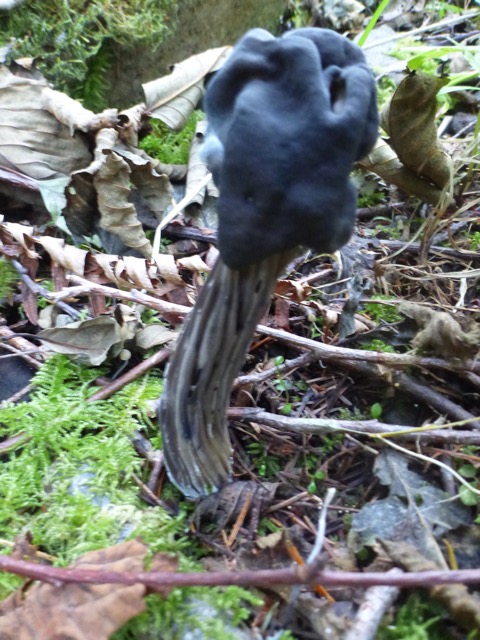
Early November: As October comes to a close, the time has finally arrived for the more solid mushrooms to sprout. Maybe it just takes longer to produce a meaty, tasty treat like a chanterelle or a Boletus edulis. At last we now begin to spot those apricot trumpets pushing through the dirt and exposing their vivid yellow stalks. By now everywhere we look the forest floor is covered with yellow leaves. Yet this is precisely the moment the cunning chanterelles have been waiting for. Cleverly camouflaged amongst the egg-yellow foliage, the chanterelles now stretch out their necks and spread their trumpets – making them an easy mark for a predator like myself.
Where to find chanterelles:
Where there’s one, there’s probably at least two more – or so I tell myself as I go crawling through the soggy underbrush. It does seem that chanterelles like company but more likely these concentrations imply a preference for a certain kind of forest floor. Usually, I can find chanterelles in stands of older Douglas fir trees, or even younger stands (20 years) that have been planted so tightly that little sunshine can penetrate and the forest floor is in deep shade, covered with pine needles. Typically, they congregate where the slope is mild and may host a more productive patch of mycelium.
.jpeg) The mycelium is an extended subterranean network of mycorrhizal links between the plants, mushrooms, and the entire forest. If you dig up the forest floor you may spot little white threads that permeate the earthy loam. These are the veins of the mycelium that carry vital minerals to the trees and in return receive vitamins garnered through the photosynthesis occurring in the sun lit treetops. Finding a productive patch of forest that sprouts mushrooms with regularity is probably indicative of a healthy carpet of mycelium.
The mycelium is an extended subterranean network of mycorrhizal links between the plants, mushrooms, and the entire forest. If you dig up the forest floor you may spot little white threads that permeate the earthy loam. These are the veins of the mycelium that carry vital minerals to the trees and in return receive vitamins garnered through the photosynthesis occurring in the sun lit treetops. Finding a productive patch of forest that sprouts mushrooms with regularity is probably indicative of a healthy carpet of mycelium.
Over time, I’ve developed an “eye” for spotting forest habitats that seem more likely to harbor an active mycorrhizal network. This woodsy intuition notwithstanding, most of my success identifying good chanterelle hunting grounds is probably 25% patience, 15% deduction from the type of soil and tree coverage, 10% smell (many of my most productive sites have an earthy, fungal odor), and 50% luck. It’s the very unpredictability of this quixotic endeavor that makes it all the more enticing.
